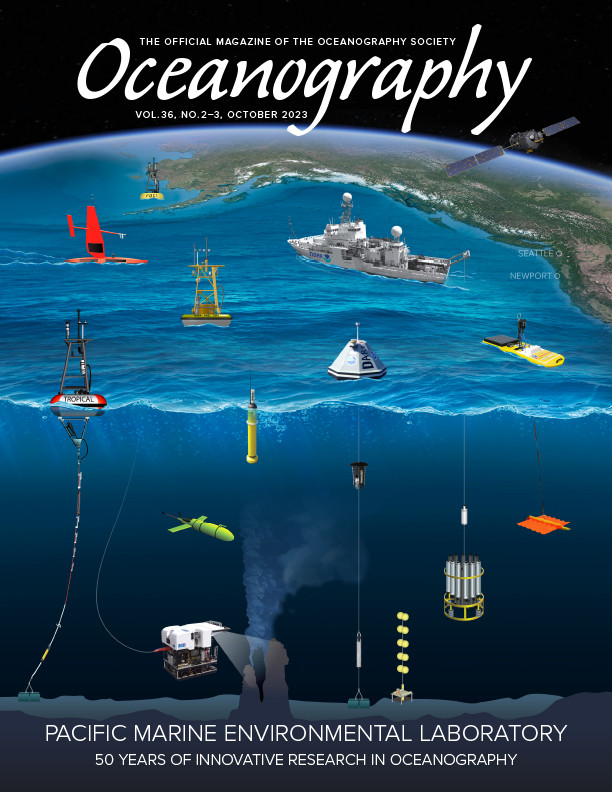Full Text
In June 2023, The Oceanography Society (TOS) introduced its new Oceanography flipbook kiosk (https://oceanographydigital.tos.org/), where anyone can page through full issues of the magazine and supplements such as those on ocean exploration and ocean observing. The pages render crisply, and issues are easily navigable. Issue availability on the kiosk goes back through 2015. This open access kiosk replaces the former digital editions that were made available to TOS members only through Advanced Publishing.
An exciting enhancement now available to Oceanography authors through these flipbooks is the ability to embed videos, animations, photo galleries, and audio files in articles. This special issue of Oceanography on “Pacific Marine Environmental Laboratory: 50 Years of Innovative Research in Oceanography” is the first time authors have had this option available. In the flipbook version of this special issue (https://oceanographydigital.tos.org/flip-book/110286/579668), readers can click on the links in figures to access movies in Feely et al. that show ocean pH as well as calcium and aragonite saturation states through time. In Walker, readers can view a movie of West Mata submarine volcano showing results from MAPR (Miniature Autonomous Plume Recorder) data collection. In Hermann et al., animations derived from model outputs are available for viewing. In Butterfield et al., the title page graphic includes a link to video of the seafloor taken by Schmidt Ocean Institute’s remotely operated vehicle Subastian. Bernard et al. includes links to movies related to tsunami propagation and forecasting.
We strongly encourage future Oceanography authors to take advantage of this opportunity to enhance their articles by adding various media to them. When submitting these extras, please consider the following guidelines:
- Videos must be provided to Oceanography in a format compatible with YouTube. We recommend that videos not exceed a few minutes in length. They will be uploaded to The Oceanography Society’s YouTube channel and linked to a figure in the flipbook. If the movie exists on another institution’s YouTube or Vimeo channel, and that link is stable, we can instead use that link.
- GIFS can be added straight to the flipbook with a maximum size of 5 MB.
- Audio files must be in MP3 format and no larger than 100 MB.
- Photos for a photo gallery must be in jpg or png format and no larger than 5 MB each.
All enhancements must be directly associated with a figure in the article—the link to media is embedded within the figure (e.g., for videos and GIFS, readers will see an arrow on top of the figure to click on). Any captions and credits should be provided at the time of submission of the media to Oceanography so that we can include them appropriately. Whenever such article enhancements are available, we will add a subhead in the main article called “Flipbook Edition” to alert readers.
The Oceanography Society is always seeking new and creative ways to foster cross-disciplinary communication in the ocean sciences. We hope future Oceanography flipbooks will be a leap forward in achieving this goal. Please contact me at [email protected] with any questions about sharing media in your next Oceanography article.
– Ellen S. Kappel, Editor

